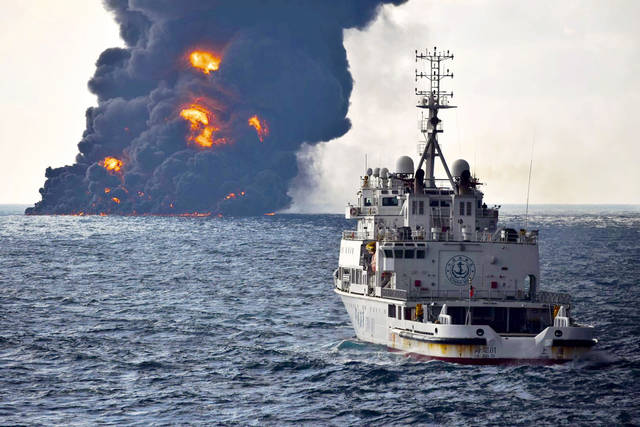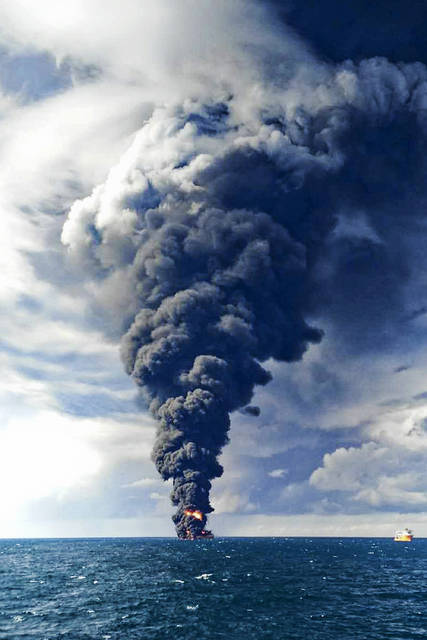BEIJING — Several oil slicks have been found in waters around a sunken Iranian tanker ship in the East China Sea in a spill that is growing and whose potentially major impact on the marine environment is still being assessed.
The State Oceanic Administration said late Monday oil slicks around the site of the sunken ship were much larger than the previous day. The Sanchi sunk on Sunday after burning for more than a week following a collision with a Hong Kong-registered tanker. All 32 members of its crew — 30 Iranians and two Bangladeshis — are believed dead.
The State Oceanic Administration said a 15-kilometer (9-mile)-long oil slick was found southwest of the site of the sinking and another slick stretched 18 kilometers (11 miles) to the east. The site is about 530 kilometers (330 miles) from Shanghai and 310 kilometers (193 miles) from Naha, Japan.
The administration said two ships and an aircraft were on the scene monitoring developments, but described no further action being taken at present.
The ship was carrying natural gas condensate, which continued to burn on the ocean surface. Condensate is highly toxic but readily evaporates or burns off in a fire. If trapped underwater, however, it could seriously harm the marine environment.
The cause of the Jan. 6 collision between the Sanchi and the Chinese freighter CF Crystal, which was carrying grain, remains unclear. The ship’s voice data recorder was reportedly recovered Saturday, possibly helping reveal how the collision and resulting fire occurred.
Authorities need to first assess the amount of condensate leaked and the size of the area contaminated, said Paul Johnston, of Greenpeace International’s Science Unit at Britain’s University of Exeter.
“Surveillance and assessment by authorities is critical to understand the extent of the potential environmental impact and for deciding on the appropriate next steps in terms of salvage and recovery of the potential condensate spill,” Johnston wrote in a Greenpeace news release.
Because most of the condensate would have burned off or evaporated, the disaster will not result in the sort of thick, black oil slick typical of crude oil spills, Greenpeace said.
However, it will be much more difficult to separate from water because the condensate is so light, colorless and partially soluble. “A major concern is that, now that the tanker has sunk, any condensate which did not yet burn off could continue to leak underwater, disperse and break down quite quickly, significantly complicating clean-up operations,” Greenpeace said.
Authorities and environmentalists have said it’s too early to know the impact on fisheries, although Greenpeace said the area is spawning ground for bluefin leatherjacket and swordtip squid and the winter habitat of blue crab, chub mackerel and yellow croaker.



